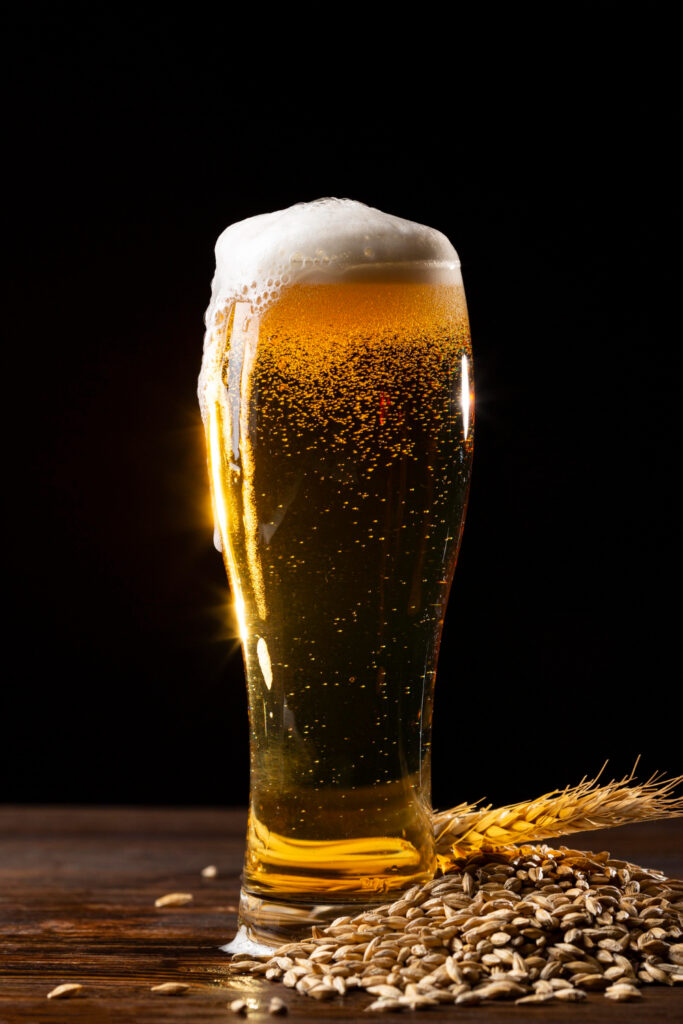Address:
1700 Elphinstone Street, Unit:H, Regina, SK S4P2Z6
Work Hours:
Monday to Sunday: 9AM - 3AM
Address:
1700 Elphinstone Street, Unit:H, Regina, SK S4P2Z6
Work Hours:
Monday to Sunday: 9AM - 3AM

Welcome to YQR Distillery, your gateway to the world of beer in the heart of Saskatchewan, Canada! For many, acquiring a taste for beer is a delightful journey of exploration and discovery. Whether you’re a newcomer to the world of brews or looking to expand your palate, this blog will guide you through the process of acquiring the taste of beer. We’ll explore the rich history of beer, delve into the different styles, and offer practical tips to enhance your beer-tasting experience. So, let’s raise a glass and embark on this flavorful journey!
Before we dive into the nitty-gritty of acquiring the taste for beer, let’s take a moment to appreciate the rich history and diversity of this beloved beverage.
Beer has been enjoyed by humans for thousands of years, with its origins dating back to ancient civilizations like the Sumerians and Egyptians. These early brewmasters laid the foundation for the art of brewing, and their recipes have evolved into the wide array of beers we have today.
Understanding the fundamental ingredients of beer is crucial in developing an appreciation for its flavors:
Beer comes in a multitude of styles, each with its own unique characteristics. As you begin your beer-tasting journey, exploring different styles will be your passport to flavor diversity.
When delving into the world of beer, one of the fundamental distinctions you’ll encounter is between lagers and ales. These two primary categories encompass a vast array of beer styles, each with its own unique character, and understanding the differences between them is key to appreciating the diverse world of beer.

Lagers are a category of beer known for their clean, crisp, and refreshing taste. What sets lagers apart is their fermentation process, which occurs at cooler temperatures compared to ales. This cooler environment allows for a slower fermentation, resulting in a beer with a notably smooth and clean profile.
On the other side of the spectrum, ales are beers that ferment at warmer temperatures, giving rise to a wider range of flavors and aromas. Ales are celebrated for their complexity and diversity, offering beer enthusiasts a journey through an extensive flavor palette.

Now that we’ve distinguished between lagers and ales, let’s delve deeper into some specific beer styles within these categories. Each style has its own distinct characteristics, making your journey into the world of beer all the more exciting.
Pilsner is a classic beer style that’s often recommended as a perfect starting point for those new to beer tasting. Originating from the Czech Republic, this style is known for its refreshing, crisp, and slightly bitter taste. Here’s what you can expect from a Pilsner:
If you’re seeking a more robust and adventurous flavor experience, then India Pale Ale, commonly known as IPA, might be your next step. IPAs are celebrated for their hoppy bitterness and a burst of fruity and citrusy notes. Here’s what you should know about IPAs:
For those with a taste for the darker side of beer, stouts are a captivating choice. These brews are known for their deep, dark colors and a rich, velvety mouthfeel. Here’s a closer look at stouts:
Now that you have a basic understanding of beer styles, it’s time to hone your beer-tasting skills. The following steps will help you appreciate the intricate flavors of each brew:
The shape and design of your glass can significantly affect your beer-tasting experience. For example, tulip glasses concentrate aromas, while pint glasses allow for easy sipping.

Before taking your first sip, hold the glass up to the light and observe the beer’s appearance. Note its color, clarity, and the size and persistence of the head (foam).
Gently swirl your beer to release its aromatic compounds, then take a moment to inhale deeply. Pay attention to the various scents, such as hops, malt, fruit, or spices.
Finally, take a small sip and let the beer coat your palate. Note the initial flavors, the development of tastes as you sip, and the aftertaste or finish. Pay attention to the balance of sweet, bitter, and other flavor elements.
To refine your palate further, try tasting different styles side by side. Comparing beers can help you recognize subtle nuances and appreciate the complexity of each.
Becoming a connoisseur of beer is an ongoing journey. Here are some practical tips to help you along the way:
Maintaining a beer journal can help you track your preferences, remember your favorite brews, and note your evolving tastes.
Look out for beer tastings and brewery tours in your area. These events provide an excellent opportunity to sample a variety of beers and learn from experts.
Experiment with beer and food pairings to enhance your tasting experience. Discover how certain dishes complement or contrast with different beer styles.
Don’t hesitate to ask for recommendations from knowledgeable bartenders, friends, or fellow beer enthusiasts. They can introduce you to hidden gems and guide you toward beers that match your preferences.
As you embark on your journey to acquire the taste of beer, it’s essential to do so responsibly. Remember that alcohol consumption should be enjoyed in moderation, and always prioritize your safety and well-being.
Acquiring the taste for beer is an exciting and rewarding adventure that can bring you closer to the diverse world of brewing. At YQR Distillery, we’re here to support you on this journey, offering a wide range of exceptional craft beers to explore. Whether you’re sipping a refreshing pilsner or savoring a robust stout, each beer tells a unique story and invites you to be part of its history.
So, take your time, savor each sip, and enjoy the journey as you unlock the flavors of the fascinating world of beer. Cheers to your palate’s new adventure!
If you’re ready to begin your beer-tasting journey, visit YQR Distillery today, and our knowledgeable staff will be delighted to introduce you to our exceptional beer offerings. Explore, taste, and discover the incredible world of beer right here in Saskatchewan, Canada.